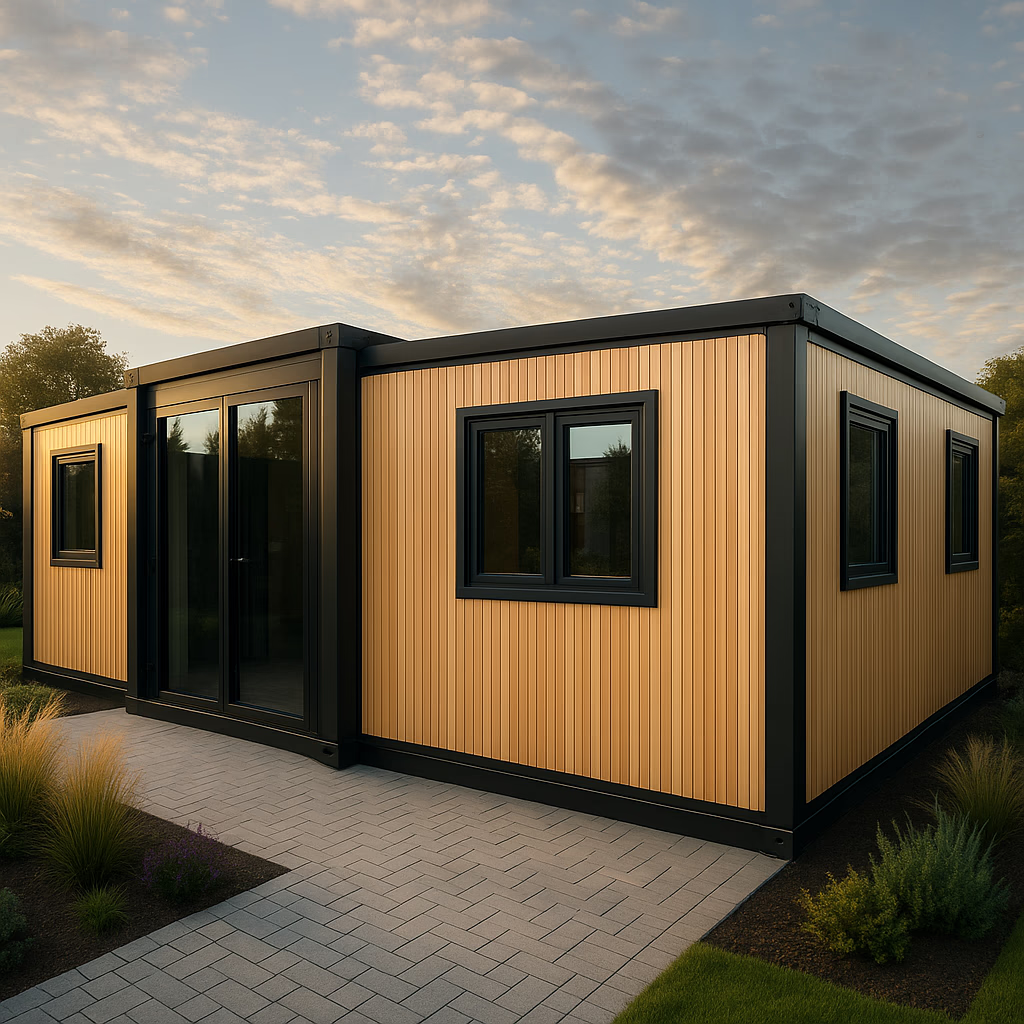This article contains affiliate links. We earn a small commission if you purchase through our links, at no extra cost to you. Read more in our affiliate disclaimer.
Recently, I’ve been browsing around looking at different ways to quickly add additional living space. Not that it’s something I’m planning to do in the near future, but mostly to see what options are available. Many people focus on tiny houses, but for a family with 3 kids, that can get pretty cramped.
I’ve long thought about the possibility of building with ready-made shipping containers or simply placing a bunch of RVs on the property 🙂 But one company that I think looks really promising, I found through my affiliate network. Maybe they should work a little on their Google game to be found that way instead…
It’s Home Seller USA. Now, I don’t live in the USA, but I think their concept seems cool. So if anyone is interested, check them out here.
Why Look Beyond Tiny Houses?
Don’t get me wrong – tiny houses are fantastic for couples or single people wanting to downsize and live simply. But when you’re talking about a family with multiple children, the “tiny” concept starts to feel more like “cramped” pretty quickly.
Space realities for families:
- Kids need their own space as they grow
- Homeschooling requires dedicated areas
- Storage needs multiply with each family member
- Privacy becomes increasingly important
Alternative Quick Housing Solutions
Shipping Container Homes
Pros:
- Strong, weatherproof structure
- Modular design allows expansion
- Relatively quick setup
- Can be moved if needed
Cons:
- Insulation challenges in extreme climates
- Limited width (8 feet standard)
- May require permits like traditional homes
- Cost can add up with modifications
Best for: Families wanting modern, industrial aesthetic with room to expand
Multiple RV Setup
This might sound crazy, but hear me out – what if you had a “compound” of RVs serving different purposes?
Possible setup:
- Main RV: Kitchen, living area, parents’ bedroom
- Kids’ RV: Bunk beds, play area, storage
- Office RV: Homeschool space, work area, quiet zone
Pros:
- Each unit is fully functional
- Easy to relocate entire setup
- Lower upfront investment
- No construction permits needed
Cons:
- Multiple electrical/water hookups needed
- Heating/cooling costs for multiple units
- May look cluttered to some
- Resale value considerations
Modular/Manufactured Homes
Companies like Home Seller USA are focusing on quick-delivery, affordable housing solutions that bridge the gap between tiny houses and traditional construction.
What makes them interesting:
- Factory-built quality control
- Faster delivery than site-built
- Often more space-efficient layouts
- Financing options similar to traditional homes
What to Consider for Off-Grid Applications
Power Requirements
Whatever solution you choose needs to work with your off-grid power system:
- Calculate total electrical load
- Consider heating/cooling efficiency
- Plan for expansion of solar/battery systems
Water and Waste
- Multiple units = multiple plumbing considerations
- Septic system sizing for larger occupancy
- Rainwater collection potential with more roof area
Zoning and Permits
- Some areas restrict multiple dwellings
- Container homes may face approval challenges
- RV living regulations vary by county
The Home Seller USA Concept

While I can’t personally vouch for them (not being in the US market), their approach addresses some key pain points:
Fast delivery times – Weeks instead of months Turnkey solutions – Reduced decision fatigue Financing options – Makes larger purchases manageable Various size options – From small to family-sized
If you’re in the US market and looking at quick housing solutions, they might be worth investigating.
Making Your Decision
Questions to ask yourself:
- Is this temporary or permanent housing?
- What’s your total budget including site prep?
- How important is mobility/flexibility?
- What are local zoning requirements?
- How will this integrate with your off-grid systems?
Final Thoughts
The housing market has gotten creative out of necessity, and there are more options than ever for families needing space quickly. Whether it’s containers, modular homes, or even an RV compound, the key is matching the solution to your specific needs and circumstances.
The tiny house movement opened our minds to alternative living, but it doesn’t have to be the only alternative. Sometimes families need space to spread out while still maintaining that off-grid, self-sufficient lifestyle.
What housing solutions have you considered for your off-grid journey? Have you seen any innovative approaches that caught your eye?
